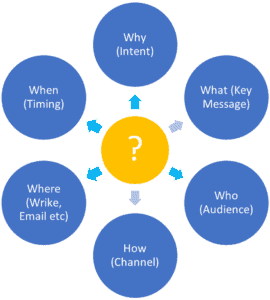When it comes to project failure, IT projects have a bad reputation. From running over budget, weeks, months, or even years past deadline, to failing to deliver promised functionality, apparently simple system upgrades can cause havoc in your business if they are not properly delivered.
At Envisage Technology, we have more than two decades of experience in the successful delivery of customer projects, including delivering IT solutions and cybersecurity systems in critical health environments. In these circumstances, a catastrophic project failure can have life changing consequences.
No matter what industry we are working with or the size of the project, we have consistently found the key to avoiding project failure is good communication. It is critical that everyone involved in the project is on the same page and understands what the project will deliver, how this will happen and what limitations apply.
Common communication pitfalls
Poor communication can happen in a multitude of ways, but there are some common themes that frequently cause IT projects to fail. They include:
1. Poorly defined project scope
2. Failure to identify key assumptions
3. Project managers who lack experience and training
4. A lack of formal methods or strategies
5. Key project staff turnover, leaving the project and/or company
6. Poor management of expectations
7. Lack of detailed documentation
8. Failure to track requirements
9. Failure to track progress
10. Poor risk management and mitigation
Poor communication almost always leads to budget blowouts, program delays, scope overruns, under-resourcing and negative stakeholder experiences. The impact has a compounding and negative effect throughout the project lifecycle.
Six things to consider for effective communication
Effective communication is the foundation of successful project delivery. A simple but effective method for avoiding miscommunication is focusing on six key questions whenever you need to share information.
1. Why are we communicating this?
What is the intent behind this? What do we want to achieve?
2. What are we communicating?
What is the key message?
3. Who are we communicating this with?
Who are the target audience? Who needs to know this information?
4. How should we communicate this?
What is the most appropriate method to reach and engage with your target audience? Should it be verbal or written? Formal or informal?
5. Where are we communicating this?
What are the most appropriate channels of communication to reach and engage with our audience?
6. When are we communicating this?
What is the timing and scheduling of this message? Are you sharing the information in a timely manner? Does this give everyone enough time to consider and respond to the information?

Communicating clearly is the first step to successful IT project delivery. If you would like more information on how we can assist you with your IT projects or for more advice on IT matters, contact the Envisage Technology team on 07 3193 9976.






